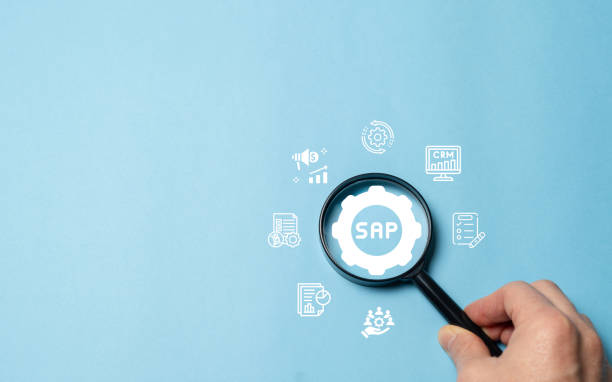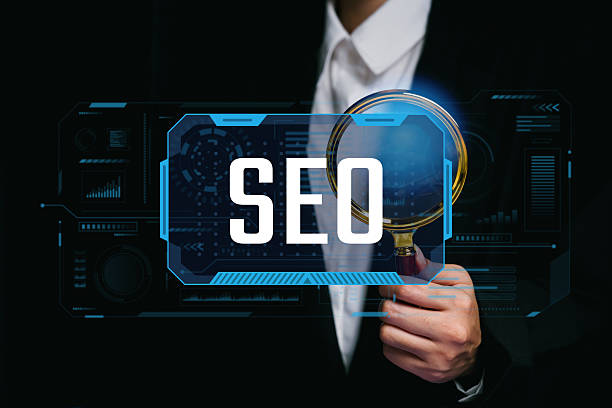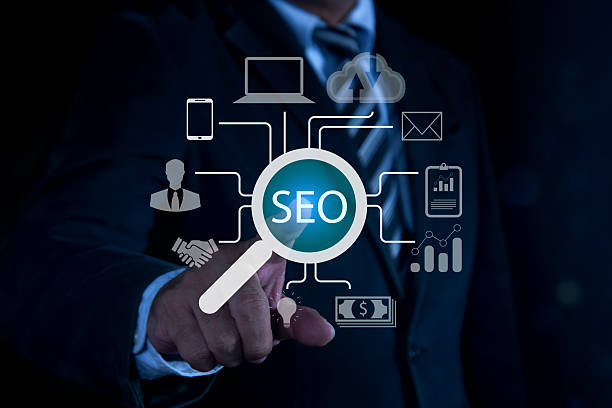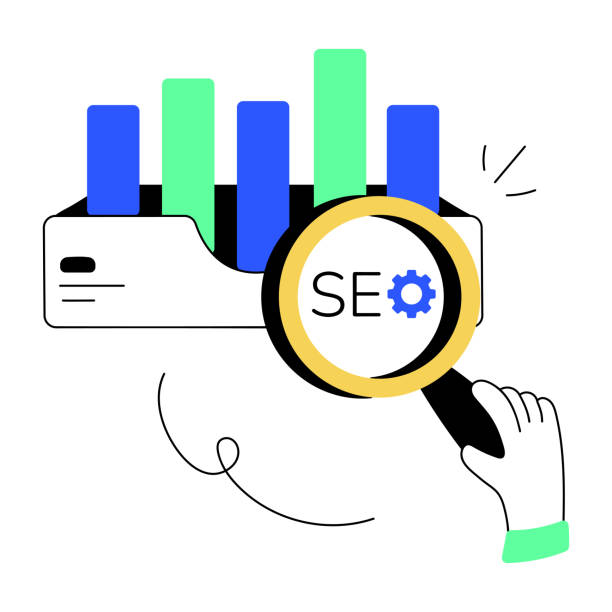What is On-Page SEO and Why is it Important?
On-Page SEO refers to a set of techniques and actions you perform within your own website to improve your site’s ranking in Google search results improve.
These actions include optimizing content, site structure, HTML tags, and more.
Unlike Off-Page SEO, which involves link building and activities outside of your site, On-Page SEO is completely under your control and has a direct impact on your site’s ranking. The importance of On-Page SEO stems from the fact that search engines like Google use complex algorithms to rank websites.
These algorithms consider various factors, many of which are related to On-Page SEO.
By optimizing the internal elements of your site, you help Google better understand your content and, as a result, achieve a better ranking in search results.
A website with strong On-Page SEO has a better chance of attracting organic traffic and increasing targeted visitors.
In fact, On-Page SEO is the foundation of a successful SEO strategy.
In simpler terms, On-Page SEO means optimizing all the elements that exist within your website to make them more attractive to search engines.
These elements include text content, images, videos, site structure, and HTML code.
By doing On-Page SEO correctly, you can help search engines better understand your website and, as a result, improve your website’s ranking in search results.
Did you know that customers’ first impression of your company is your website? Multiply the credibility of your business with a powerful corporate website from Rasaweb!
✅ Custom and eye-catching design tailored to your brand
✅ Improved user experience and increased customer acquisition
⚡ Get free consultation!
Keyword Research: The First Step to Successful On-Page SEO
Keyword Research is one of the most important steps in On-Page SEO.
Before you start producing content or optimizing website pages, you need to know what words users search for on Google.
By identifying the right keywords, you can create content that answers users’ questions and needs and ranks well in search results. For keyword research, you can use various tools such as Google Keyword Planner, Ahrefs, SEMrush, and Moz Keyword Explorer.
These tools provide you with valuable information about search volume, competition, and related keywords.
When choosing keywords, pay attention to the following:
Click here to preview your posts with PRO themes ››
Relevance of keywords to the website topic: Keywords should be related to the content of your site and answer users’ questions. Search Volume: Keywords should have a good search volume so that you can attract significant organic traffic. Competition: Keywords should have low competition so that you can rank well in search results. After identifying the right keywords, use them in page titles, meta descriptions, main content text, and image tags.
But keep in mind that excessive use of keywords (Keyword Stuffing) can have a negative impact on your site’s ranking.
Your main goal should be to create valuable and useful content for users.
Effective On-Page SEO can bring your website to higher rankings in search results.
To succeed in On-Page SEO, you must first find the right keywords.
Optimizing Title and Meta Descriptions: Attracting Clicks from Search Results
The Title Tag and Meta Description are two important elements in On-Page SEO that appear in search results.
The page title is the main title of the page that is displayed in the browser tab and in search results.
The meta description is a summary of the page’s content that appears below the title in search results.
These two elements play an important role in attracting clicks from search results.
The title and meta description should be attractive, relevant, and contain keywords.
The title should briefly and accurately describe the topic of the page and encourage users to click.
The meta description should be a summary of the page’s content and tell users what they will find by clicking on this link.
The title length should not exceed 60 characters and the meta description length should not exceed 160 characters.
Using keywords in the title and meta description can help improve your site’s ranking in search results.
But keep in mind that excessive use of keywords can have a negative impact.
Try to write the title and meta description in a way that is attractive and useful to users.
On-Page SEO is done completely by optimizing the title and meta descriptions.
Click here to preview your posts with PRO themes ››
Here are two optimized tables for a better understanding of the title and meta descriptions:
| Element | Description | Key Points |
|---|---|---|
| Title Tag | The main title of the page that appears in the browser tab and search results. | Maximum 60 characters, use of keywords, attractive and relevant to the page topic |
| Meta Description | A summary of the page’s content that appears below the title in search results. | Maximum 160 characters, use of keywords, attractive and encouraging to click |
Content Optimization: Producing Valuable and Useful Content
Content is the king of SEO.
Producing valuable, useful, and unique content is one of the most important factors in On-Page SEO.
Your content should answer users’ questions and needs, provide them with useful information, and encourage them to return to your site.
High-quality content has a better chance of being shared on social networks and receiving links from other sites, which helps improve your site’s ranking in search results.
To optimize content, pay attention to the following: Choosing attractive topics that are relevant to the needs of users: The topics of your content should be attractive and useful to the target audience. Keyword Research: Use appropriate keywords in the title, main text, and HTML tags. Proper Structure: Organize your content regularly using headings, subheadings, paragraphs, and lists. Readability: Use short and simple sentences and avoid using specialized and complex terms. Images and Videos: Use relevant and high-quality images and videos in your content to increase its attractiveness. Content Update: Update your content regularly to keep the information up-to-date and accurate.
Strong On-Page SEO needs strong content.
How much does it cost you to lose business leads due to a non-professional website? Solve this problem forever with professional corporate website design by Rasaweb!
✅ Increasing the credibility and trust of potential customers
✅ Easier attraction of new business leads
⚡ Get a free consultation now!
URL Structure: Creating SEO-Friendly URLs
URL Structure is an important factor in On-Page SEO.
SEO-friendly URLs are URLs that are short, readable, relevant to the page topic, and contain keywords.
An SEO-friendly URL helps search engines better understand the topic of the page and helps users easily find the page they are looking for.
To create SEO-friendly URLs, pay attention to the following:
Shortness: URLs should be as short as possible. Readability: URLs should be readable and understandable. Use of Keywords: URLs should contain keywords related to the page topic. Use of Hyphen (-): Use a hyphen to separate words in the URL. Avoid using special characters: Avoid using special characters such as &, %, and # in your URL. For example, instead of using the following URL: `https://www.example.com/page?id=123&category=456`Use the following URL:`https://www.example.com/seo/seo-internal`By following these tips, you can create SEO-friendly URLs and help improve your site’s ranking in search results.
On-Page SEO through URL structure optimization can help improve your site’s ranking in search results.
Image Optimization: Reducing Size and Using ALT Tag
Images play an important role in the attractiveness and usability of websites.
But using high-volume images can slow down the loading speed of the site and have a negative impact on SEO.
To optimize images, pay attention to the following: Reducing Image Size: Use image compression tools such as TinyPNG and ImageOptim to reduce image size. Choosing the Right Format: Use JPEG format for images with many colors and PNG format for images with few colors and transparency. Use of ALT Tag: The ALT Tag (Alternative Text) is a short description for the image that is displayed to users if the image fails to load.
The ALT tag should be descriptive and contain keywords related to the image. Image File Name: The image file name should be related to the image topic and contain keywords. For example, instead of using the file name `IMG_1234.jpg` use the file name `seo-internal.jpg`.
By optimizing images, you can increase the loading speed of the site and help improve On-Page SEO.
On-Page SEO also needs image optimization.
Internal Linking: Creating Connections Between Website Pages
Internal Linking refers to the process of creating links between different pages of your website.
Internal linking helps search engines better understand the structure of your site and identify more important pages.
Also, internal linking helps users easily navigate your site and find the information they need.
For internal linking, pay attention to the following:
Relevance of Links: Links should be created between related pages. Use of Proper Anchor Text: Anchor text is the text that you click on to go to another page.
The anchor text should be related to the topic of the destination page and contain keywords. Appropriate Number of Links: The number of internal links on each page should be appropriate.
Avoid excessive linking. Linking to Important Pages: Link to important and popular pages of your site. On-Page SEO will be incomplete without proper internal linking.
| Feature | Description |
|---|---|
| Relevance of Links | Links should be created between pages with related topics. |
| Proper Anchor Text | The text used for the link should be related and contain keywords. |
| Appropriate Number of Links | The number of links on each page should not be excessive to avoid disrupting the user experience. |
| Linking to Important Pages | Pages that are important to your business should be linked more often. |
Site Loading Speed: Optimization for Better User Experience
Site Loading Speed is one of the most important factors in On-Page SEO and user experience.
Users expect website pages to load quickly.
If your site’s loading speed is slow, users will quickly leave the site, which has a negative impact on your site’s ranking in search results. To increase site loading speed, you can use the following methods: Image Optimization: High-volume images can slow down site loading speed.
Use image compression tools to reduce image size. Enable Gzip Compression: Gzip compression reduces the size of HTML, CSS, and JavaScript files and increases site loading speed. Use of CDN: CDN (Content Delivery Network) is a network of servers that stores your site’s content in different parts of the world.
Using CDN allows users to receive content from the server closest to them and increases site loading speed. Code Optimization: HTML, CSS, and JavaScript code should be optimized and compressed.
Use of Cache Plugins: Cache plugins can save your site’s pages and increase their loading speed. On-Page SEO requires attention to site loading speed.
Disappointed with the low conversion rate of your online store? Rasaweb turns your online store into a powerful tool for attracting and converting customers!
✅ Significant increase in the conversion rate from visitor to buyer
✅ Unmatched user experience to increase customer satisfaction and loyalty⚡ Get a free consultation from Rasaweb!
Responsive Design: Optimization for Different Devices
Responsive Design means designing a website that automatically adapts to the screen size of different devices (such as computers, tablets, and mobile phones).
Given the increasing use of mobile devices to search the internet, responsive design is very important for On-Page SEO.
Google gives a better ranking to websites that have responsive design.
To create a responsive website, you can use CSS frameworks such as Bootstrap and Foundation.
You can also use media queries in CSS to adjust how elements are displayed on different devices.
Good On-Page SEO includes responsive design as well.
Responsive design allows users to have a good user experience on any device they use.
This increases user satisfaction and reduces Bounce Rate, both of which are important factors in SEO.
XML Sitemap: Guiding Search Engines to Index Your Site
An XML Sitemap is a file that contains a list of all the pages on your website.
The XML sitemap helps search engines easily find and index the pages of your site.
Creating an XML sitemap is very important for On-Page SEO, especially for large websites with complex structures.
To create an XML sitemap, you can use online tools such as XML-Sitemaps.com.
After creating the XML sitemap, register it in Google Search Console so that Google can easily access it.
Keeping your sitemap up to date is very important.
Whenever you add a new page to your website or delete a page, you need to update your sitemap so that search engines have accurate information about the structure of your website.
Remember that On-Page SEO is not just optimizing the pages of your website, but also ensuring that search engines can easily find and index your website.
Frequently Asked Questions
| Question | Answer |
|---|---|
| What is On-Page SEO? | On-Page SEO includes optimizing elements that are directly in your control and within your website. The goal is to help search engines better understand the content of the page and improve its ranking. |
| Why is On-Page SEO important? | On-Page SEO gives clear signals to search engines about the content of the page, improves user experience, and increases the chance of attracting organic traffic. |
| What are the most important On-Page SEO factors? | Keywords, Title Tag, Meta Description, URL structure, quality content, image optimization, and internal links are among the most important factors. |
| What is the role of the Title Tag in On-Page SEO? | The title tag is one of the most important signals for search engines and users that identifies the main topic of the page. It should include the main keyword and be attractive. |
| How important is the Meta Description? | The meta description does not directly affect the ranking, but it can improve the click-through rate (CTR) by encouraging users to click. |
| How to optimize images for On-Page SEO? | By using a descriptive file name, appropriate Alt Text containing keywords, compression to reduce size, and correct dimensions. |
| How do Internal Links affect SEO? | Internal links help search engines discover and index site pages, distribute PageRank throughout the site, and improve user navigation. |
| Is page loading speed one of the On-Page SEO factors? | Yes, page loading speed is a vital factor in On-Page SEO and user experience. Slower pages can lead to higher bounce rates and lower rankings. |
| What are the characteristics of quality content for On-Page SEO? | Quality content must be comprehensive, unique, relevant, reliable, readable, and fully answer users’ needs and questions. |
| How can keywords be used in content? | Keywords should be used naturally in the title, subheadings, first paragraph, body text, and Alt Text of images. Avoid Keyword Stuffing. |
And other services of Rasa Web Advertising Agency in the field of advertising
Smart Custom Software: A fast and efficient solution to improve SEO ranking with a focus on proprietary programming.
Smart Brand Identity: A new service to increase click-through rates through accurate audience targeting.
Smart Advertising Campaign: A combination of creativity and technology to attract customers through marketing automation.
Smart Reportage: A creative platform to improve SEO ranking using real data.
Smart Conversion Rate Optimization: A creative platform to improve click-through rates with an SEO-driven content strategy.
And more than hundreds of other services in the field of internet advertising, advertising consulting and organizational solutions
Internet Advertising | Advertising Strategy | Advertorial Report
Resources
On-Page SEO Tutorial in Simple Language + Practical Tips
,What is On-Page SEO and Why is it Important?
,What is On-Page SEO? Complete On-Page SEO Optimization Guide
,What is On-Page SEO? 0 to 100 On-Page SEO with Practical Examples
? To reach the peaks of success in the digital world, Rasa Web Marketing Agency with expertise in user-friendly website design and comprehensive online marketing strategies, is your reliable partner.
📍 Tehran, Mirdamad Street, next to the Central Bank, Southern Kazerun Alley, Ramin Alley No. 6













